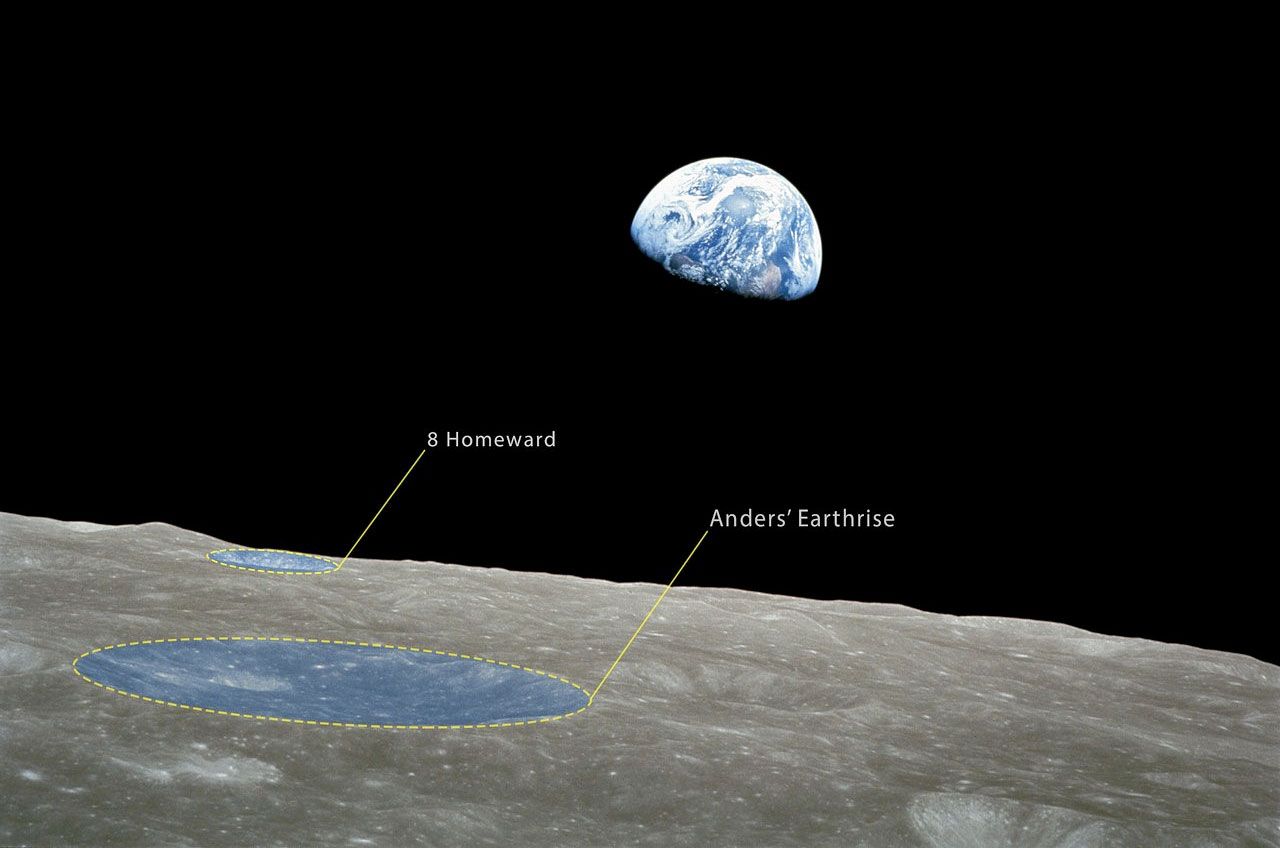A lunar crater, immortalized in the iconic “Earthrise” photograph, has become a focal point in the search for extraterrestrial life. The crater, known as “Anders’ Earthrise,” is located on the far side of the Moon and measures nearly 25 miles (40 kilometers) across. It was captured in one of the most influential images taken during the Apollo 8 mission on December 24, 1968, by American astronaut William Anders.
In a significant development, the European Space Agency’s Jupiter Icy Moons Explorer (JUICE) recently conducted a flyby of the Moon, utilizing this opportunity to test its scientific instruments. Launched in April 2023, JUICE is set to arrive in Jupiter’s orbit by 2031, where it will investigate the habitability of Jupiter’s moons.
The flyby of Anders’ Earthrise marked a pivotal moment for the mission. According to ESA representatives, this encounter allowed scientists to evaluate JUICE’s ten scientific instruments on a solid surface in space. Among them was the Radar for Icy Moon Exploration (RIME), designed to measure elevation on rocky bodies using radio wave echoes.
RIME’s primary objective at Jupiter is to penetrate the icy surfaces of moons such as Europa, Ganymede, and Callisto, mapping the rocky layers lying beneath. To optimize its performance, ESA scientists silenced the other instruments on JUICE while it passed over Anders’ Earthrise, allowing RIME to operate for eight uninterrupted minutes. This focus was essential, as RIME requires minimal electronic interference to provide accurate readings.
The radar successfully mapped the elevation of the Moon’s surface within and around the crater. Researchers compared this new data to earlier measurements obtained from NASA’s Lunar Orbiter Laser Altimeter (LOLA). Initial findings indicated that electronic noise from JUICE was affecting RIME’s readings, prompting a project to develop a new algorithm to correct these discrepancies.
ESA has now confirmed that this project was successful. The latest elevation map of Anders’ Earthrise crater aligns closely with the measurements captured by LOLA during previous lunar flybys. This validation indicates that RIME is prepared for its primary mission of charting the subsurface conditions of Jupiter’s largest moons, which may ultimately facilitate the search for signs of life.
As JUICE continues its journey, it is currently en route to Venus, where the planet’s gravitational pull will assist in propelling the spacecraft towards Jupiter. Throughout its mission, JUICE will complete a total of 35 flybys of Jupiter’s most significant moons before settling into orbit around Ganymede from December 2034 to September 2035.
The insights gained from studying Jupiter and its moons are expected to enhance our understanding of gas giants and planetary system formation. Furthermore, this exploration may shed light on the potential for life beneath the icy surfaces of these colossal moons, marking a crucial step in the quest for extraterrestrial existence.





































































